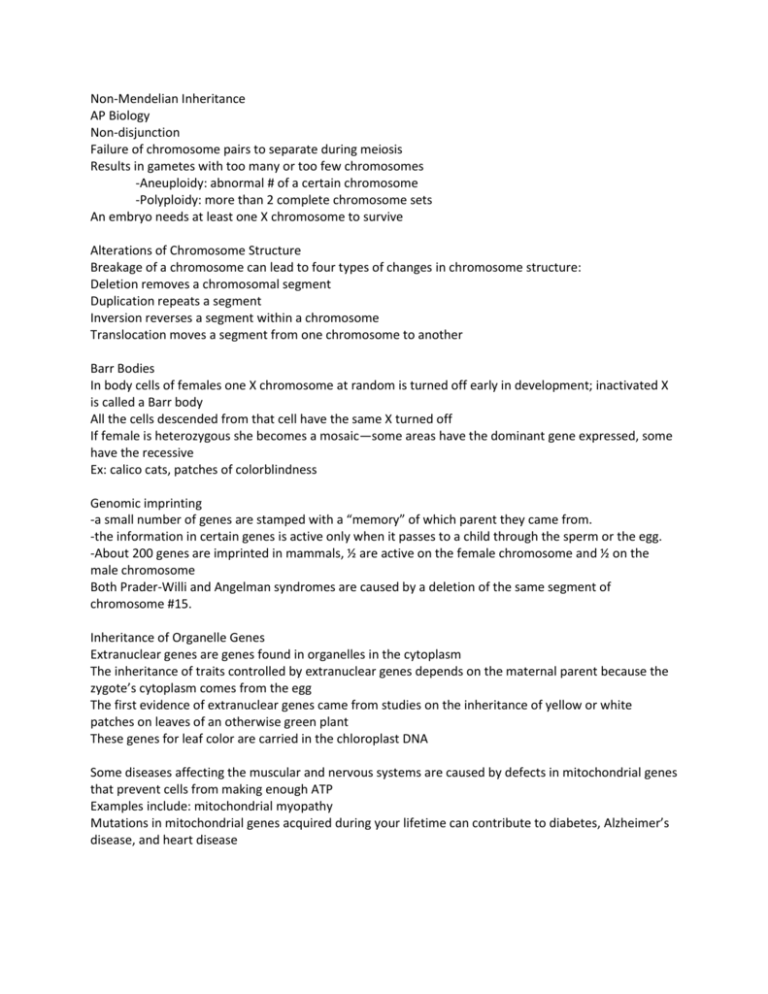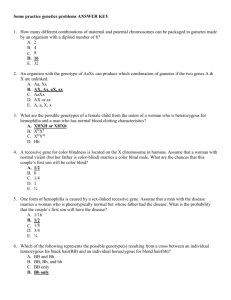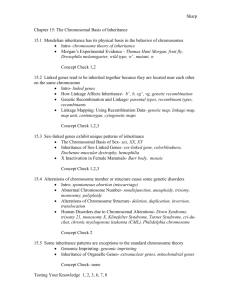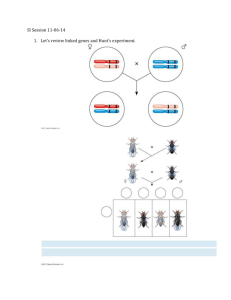Non-Mendelian Inheritance
advertisement

Non-Mendelian Inheritance AP Biology Non-disjunction Failure of chromosome pairs to separate during meiosis Results in gametes with too many or too few chromosomes -Aneuploidy: abnormal # of a certain chromosome -Polyploidy: more than 2 complete chromosome sets An embryo needs at least one X chromosome to survive Alterations of Chromosome Structure Breakage of a chromosome can lead to four types of changes in chromosome structure: Deletion removes a chromosomal segment Duplication repeats a segment Inversion reverses a segment within a chromosome Translocation moves a segment from one chromosome to another Barr Bodies In body cells of females one X chromosome at random is turned off early in development; inactivated X is called a Barr body All the cells descended from that cell have the same X turned off If female is heterozygous she becomes a mosaic—some areas have the dominant gene expressed, some have the recessive Ex: calico cats, patches of colorblindness Genomic imprinting -a small number of genes are stamped with a “memory” of which parent they came from. -the information in certain genes is active only when it passes to a child through the sperm or the egg. -About 200 genes are imprinted in mammals, ½ are active on the female chromosome and ½ on the male chromosome Both Prader-Willi and Angelman syndromes are caused by a deletion of the same segment of chromosome #15. Inheritance of Organelle Genes Extranuclear genes are genes found in organelles in the cytoplasm The inheritance of traits controlled by extranuclear genes depends on the maternal parent because the zygote’s cytoplasm comes from the egg The first evidence of extranuclear genes came from studies on the inheritance of yellow or white patches on leaves of an otherwise green plant These genes for leaf color are carried in the chloroplast DNA Some diseases affecting the muscular and nervous systems are caused by defects in mitochondrial genes that prevent cells from making enough ATP Examples include: mitochondrial myopathy Mutations in mitochondrial genes acquired during your lifetime can contribute to diabetes, Alzheimer’s disease, and heart disease









